Genre: Sports Developer: Bitmap Bros. Publisher: Arena Players: 1 Released: 1991
The Bitmap Brothers always were one of the greatest developers for the Amiga platform: Almost whatever it produced became solid gold. In 1990, it released its follow-up to its futuristic action-packed sports game, Speedball II, a fast & furious feast that became almost an instant classic. So, porting this game to a platform that was renowned for its speed and its sport titles would seem like the obvious choice, wouldn’t it?
Speedball can best be described as a ferocious mix between ice hockey and handball. Two teams of nine players face off against each other trying to score using a small steel ball. There are no rules or penalties – in fact, heavy tackling is a crucial part of the gameplay.
The basic controls are very simple and easy to learn; each button fulfills the same function. While carrying the ball, a short tap causes a fast but rather short-range pass or shot, while pressing the button causes a slower but high long-range throw. When not in possession you use the same control scheme to perform a jumping catch or a tackling slide – that’s all! However, while easy to learn, the game itself is hard to master. There are three ways of scoring: The first and obvious is by scoring goals. The second is by hitting certain bumpers and bonus fields strewn across the arena. Last but not least, you can actually rack up points by injuring your opponents! Each player has a small energy bar – when that one is depleted, the injured player is carried off by medibots, and you gain as much points as by shooting a goal. Add to that various bonus items that pop up randomly, a ramp that multiplies the scored points and a bumper that electrifies the steel ball (and hurts the opponent when he tries to touch it), and the gameplay gets really hectic, since you have to keep your eyes on many things while trying to rack up your store at high speeds at the same time. It’s action-packed, fast-paced fun!
The graphics are fitting, but nothing special. The game scrolls nice and fluently, and the design is actually able to preserve a certain cold, futuristic flair. Alter a while, though, it gets a bit boring to look at. The dominating colors are blue and grey, with not many variations. There is only one arena, and only two team variants: blueish-grey (for player one) and reddish-brown (for the opponent). There are no individual team colors, no audience, no different arena decorations. Playing a whole season can therefor become a bit dull after a while.
The lack of a decent save feature makes things even more irritating. The game uses passwords, but you only get a one when playing one out of three game modes, even there only when you make it into the major league – after 26 games in a row! Even though the individual games fly by real fast, this becomes a bit of a chore. Having a password option for only one single occasion feels a little ridiculous! More so, if you had too many injured players during the first season, you might lack the money to upgrade the team enough to stay competitive for the rest of the game, which makes this one opportunity to save kind of useless by then.
The rest of the options is next to non-existent. There are three game modes: league, knockout, and cup. There is also an option that leaves you solely with the team management (that consists of only upgrading the team with the help of Money icons collected during a match) and plays the game automatically, which is pretty useless. Also, you always start with the same team (the weakest of the bunch) – you can’t select another. This not only raises the difficulty and lowers the replay value; it also always gives experienced players an advantage over beginners in two-player mode.
What definitely does the game in, however, is the sound! The theme song alone might be able to throw off many possible players. The people responsible for this port tried to copy the original Amiga theme, but while that one had a nice fanfare and a suiting bass, the Genesis version is a screeching, garbled mess! Even worse, the same theme plays during the games, too, in an endless loop. Listening to it can really get on your nerves, and it makes concentrating on the game very hard. The fanfare declaring the endgame comes almost as a revelation!
Fortunately, one of the (very few) options allows you to turn off the music – which leaves you solely with some rather lackluster sound effects. For a tough, brutal, action-orientated, futuristic game one would expect an electrifying sound of cold hard steel. What you get, though, feels more like white noise static over weak tin. Audience is heard when a team scores a goal, but otherwise, it isn’t seen or heard. It feels more like playing in a studio with a tacked-on laugh-track than playing in an actual arena full of pumped-up, bloodthirsty fans!
This game is a fine example how a lazy port can really drag down a great premise. The gameplay is still fun, but next to no options, dull graphics, and especially the horrible music and sound effects can really ruin the experience. It’s kind of like putting a star quarterback in a team full of second-rate college footballers. He may deliver a great solo effort, but he alone can’t win the game against other pro-teams. If you’re able to look past the slipshod presentation and are only looking for a few fast games, then it’s definitely worth your while. The fast gameplay is truly gripping, and few things are more satisfying than turning around an almost-lost game by scoring a goal in the last few seconds.
SCORE: 7 out of 10

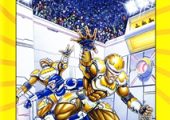
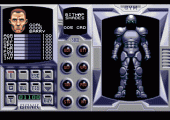
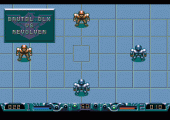
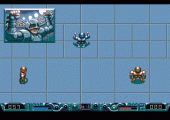
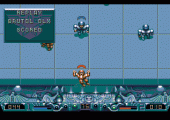
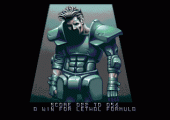
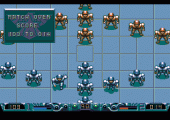
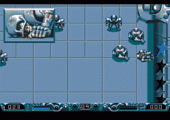

Recent Comments